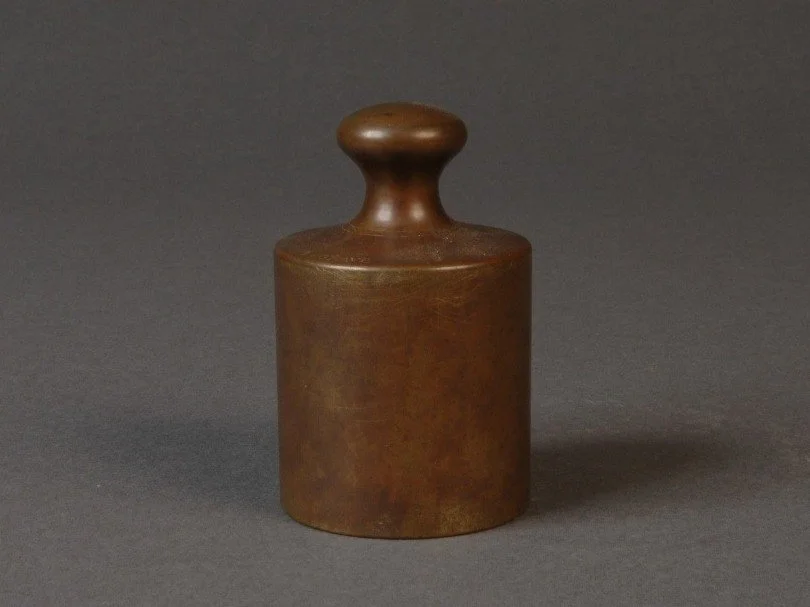How Pirates Sank America’s Chance to Go Metric: The Untold Story
Introduction: A Shipwreck That Changed History
Imagine a world where the United States measures distance in kilometers, weight in kilograms, and temperature in Celsius. It almost happened—until a group of pirates intervened.
In 1793, French scientist Joseph Dombey set sail for America with a mission: to convince the young nation to adopt the metric system. But his ship encountered a violent storm, was blown off course, and later captured by British privateers. The metric standards he carried—including a 1-kilogram copper weight—were lost at sea. This single event may have changed the course of American history, leaving the U.S. as one of only three countries that still use the imperial system.
How did pirates sink America’s chance to go metric? Why is the U.S. one of only three countries (alongside Liberia and Myanmar) that still use imperial units? And why, despite multiple attempts, has America resisted going fully metric? The answers lie in a tale of history, politics, cultural identity, and even a shipwreck. Let’s dive in.
The Metric System: A Revolutionary Idea
Grave, predecessor to the kilogram
France’s Bold New System
In the late 18th century, France introduced the metric system, a revolutionary way of measuring based on natural constants like the Earth’s circumference. The system was designed to be universal, logical, and easy to use—a stark contrast to the chaotic patchwork of measurements used across Europe.
France wanted to spread the metric system globally, and the United States, a young nation with close ties to France, seemed like the perfect candidate. Enter Joseph Dombey, a French scientist tasked with delivering a 1-kilogram copper weight and other metric standards to America.
Left: Joseph Dombey; Right Thomas Jefferson
Joseph Dombey’s Ill-Fated Voyage
In 1793, Dombey set sail for the U.S., carrying the metric standards and a letter of introduction to Thomas Jefferson, then Secretary of State. Jefferson, a proponent of scientific progress, was likely to support the metric system.
But Dombey’s journey took a disastrous turn. His ship encountered a fierce storm in the Caribbean, which blew it off course. Damaged and disoriented, the ship was intercepted by British privateers—essentially pirates sanctioned by the British government. The privateers captured Dombey, looted the ship, and threw the metric standards overboard. Dombey died in captivity, and the U.S. missed its chance to adopt the metric system at its inception.
The U.S. and the Imperial System: A Marriage of Convenience
Colonial Roots: A Hodgepodge of Systems
When the first European settlers arrived in America, they brought their own measurement systems with them. The British used imperial units like feet, pounds, and gallons, while the French and Spanish used their own systems. This created a chaotic mix of measurements across the colonies.
For example, a “foot” in one colony might differ from a “foot” in another, leading to confusion in trade and construction. This inconsistency became a problem as the colonies grew and began trading with each other. (If you’re curious about how standardized measurements evolved, check out my previous article on the History of Standardized Measurement.)
After gaining independence, the U.S. had the opportunity to adopt a new system. But without Dombey’s metric standards, the young nation stuck with the familiar imperial units. Trade with Britain, which also used the imperial system, made the decision even easier.
The Metric Act of 1866: A Half-Hearted Embrace
In 1866, the U.S. Congress passed the Metric Act, which made the metric system legal for use but didn’t require its adoption. By this time, the U.S. was rapidly industrializing, and factories, railroads, and machinery were built using imperial units. Switching to metric would have been costly and disruptive.
The Metric Conversion Act of 1975: A Bold Plan That Fizzled Out
The Push for Metrication
In the 1970s, the U.S. government made its most serious attempt to switch to the metric system. The Metric Conversion Act of 1975 aimed to transition the country to metric units over the next decade. The goal was to align with the global economy and simplify trade.
The push for metrication was driven by several factors:
Global Trade: As the U.S. increased its trade with metric-using countries, the inefficiencies of using two systems became apparent.
Scientific Advancement: The metric system was already the standard in science and medicine, and adopting it universally would streamline research and innovation.
Public Awareness: Proponents of the metric system argued that it was simpler and more logical than the imperial system.
Why the U.S. Still Uses the Imperial System
Despite its ambitious goals, the Metric Conversion Act failed, and the U.S. remains one of the few countries still using the imperial system. Here’s why:
Cultural Resistance:
Americans are deeply attached to their familiar units. Changing road signs, recipes, and weather forecasts felt like an attack on their way of life. For example, imagine telling a football fan that the field is now 91.44 meters long instead of 100 yards—it just doesn’t have the same ring to it.Economic Costs:
Switching to the metric system would require massive investments. Every road sign, textbook, and product label would need to be updated. For businesses, the cost of retooling machinery and retraining employees would be enormous. Estimates suggest the transition could cost hundreds of billions of dollars.Global Influence:
Despite using imperial units, the U.S. has managed to remain a global economic powerhouse. Many industries, like science and technology, already use the metric system, so there’s less pressure to change.Lack of Enforcement:
The Metric Conversion Act of 1975 was voluntary, so there was no real pressure to change. Without a clear mandate, the effort lacked momentum.
By the 1980s, the push for metrication had largely fizzled out, and the U.S. remained firmly imperial.
What About Liberia and Myanmar?
Liberia: A Legacy of American Influence
Liberia’s use of the imperial system is a direct result of its historical ties to the United States. Founded in the 19th century by freed American slaves, Liberia adopted many American customs and systems, including the imperial system. Even today, Liberia uses imperial units for everyday measurements, though the metric system is also taught in schools.
Myanmar: A Holdover from British Colonial Rule
Myanmar (formerly Burma) inherited the imperial system from British colonial rule, which lasted until 1948. Unlike other former British colonies, Myanmar never fully transitioned to the metric system. However, in recent years, there have been efforts to adopt metric units, particularly in trade and education.
Will America Ever Go Fully Metric?
It’s unlikely that the U.S. will fully adopt the metric system anytime soon. While the metric system is used in science, medicine, and the military, everyday life remains firmly rooted in imperial units. However, the U.S. is increasingly a dual-system country, with many products (like soda bottles) labeled in both metric and imperial units.
A Tale of Pirates, Politics, and Measurement
The story of the U.S. and the metric system is a fascinating one, filled with missed opportunities, cultural resistance, and economic challenges. From Joseph Dombey’s ill-fated voyage to the failed Metric Conversion Act of 1975, America’s relationship with the metric system has been anything but straightforward.
Will the U.S. ever go fully metric? Only time will tell. But for now, the imperial system remains a defining feature of American life—a reminder that sometimes, history takes unexpected turns.
Image Attribution:
Pirate Ship Graphic: <a href="https://www.freepik.com/free-vector/pirate-boat-concept-illustration_29654628.htm#fromView=keyword&page=2&position=1&uuid=b4f0e160-6c3d-4e1e-8291-549ed360ccf7&query=Pirate+Ship+Illustration">Image by storyset on Freepik</a>
Grave, Predecessor to the kilogram image: NIST Museum
Joseph Dombey and Thomas Jefferson Image: Library of Congress




